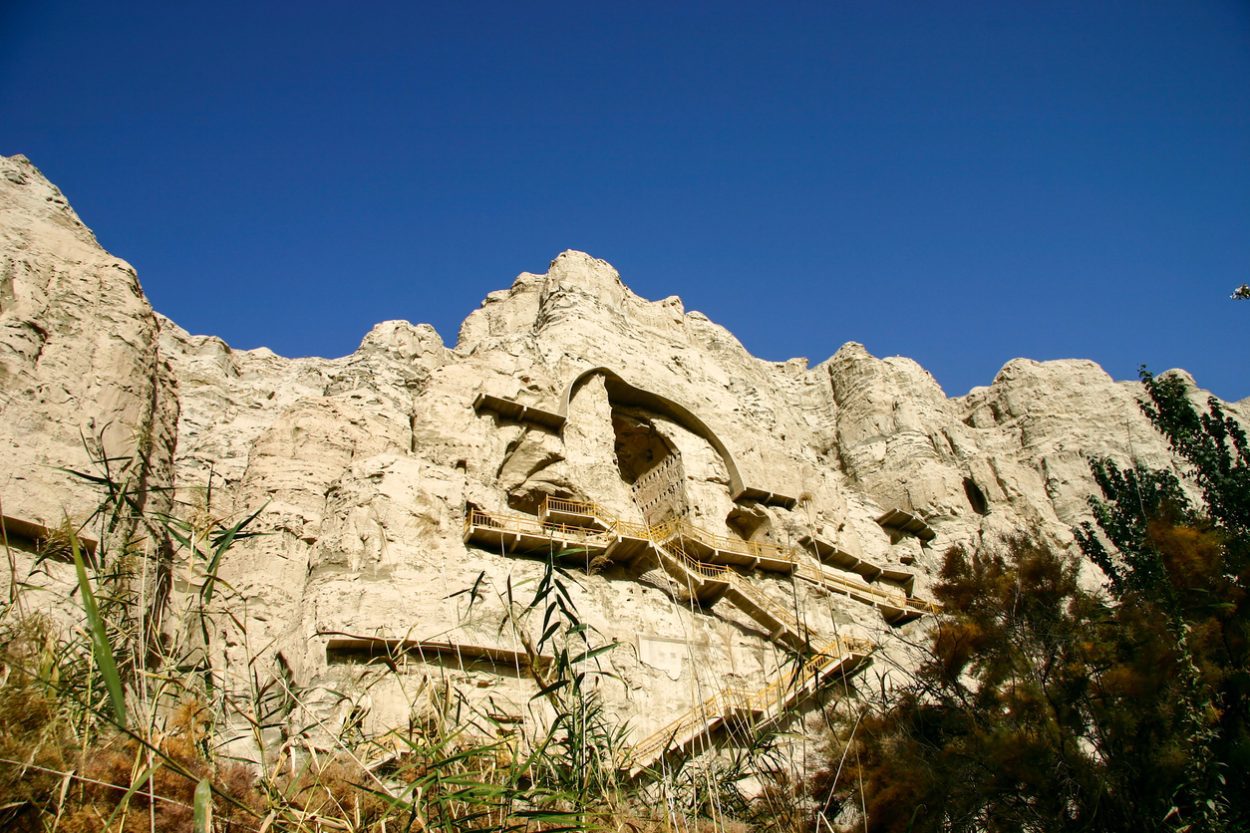The Kizil Caves, also known as Kizilgaha or Kizilgaha Caves, are a set of Buddhist rock-cut caves located near the Kizil Township in Baicheng County, Xinjiang, China.
The cave complex is associated with the ancient Tocharian rulers of Kucha, a Buddhist kingdom situated along a branch of the Silk Road, tracing the northern border of the present-day Taklamakan Desert within the Tarim Basin, and to the south of the Muzat River.
Kucha was part of the Silk Road economy, and was in contact with the rest of Central Asia, including Sogdiana and Bactria, and thus also with the cultures of India, Iran, and coastal areas of China
There are 236 cave temples that date from the 3rd to 8th century AD, carved into a cliff face stretching over a length of 2 km’s. The caves contain a wide range of architectural styles and sizes, with the earlier caves adopting more Indian and Central Asian designs, while later caves feature Chinese architectural influences.

Common architectural elements include prayer halls, assembly halls, corridors, and meditation cells, while a majority of the caves have a central pillar design, whereby pilgrims may circumambulate around a central column incorporating a niche for a statue of the Buddha (which is a representation of the stupa). The caves also house an array of Buddhist sculptures and statues, from small votive figurines to larger-than-life representations of deities, mostly crafted from clay and stucco.
An examination of the murals found in the caves show an extensive use of blue pigments, including the precious ultramarine pigment derived from lapis lazuli from Afghanistan.
The murals are classified into three distinct periods. The first style, referred to as “Indo-Iranian style I,” encompasses the early caves adorned with delicate tone-on-tone paintings in hues of browns, oranges, and greens. The term “Indo-Iranian” reflects the amalgamation of artistic influences from India and elements of Iranian art that played a pivotal role in the creation of the initial cave paintings
The second style, named “Indo-Iranian style II,” is characterized by the use of strongly contrasting colours, bold line strokes, and a vivid lapis-lazuli blue, in addition to browns, oranges, and greens. Once again, the label “Indo-Iranian” encompasses the influence from India, alongside significant contributions from the Central Asian and Iranian artistic realms.
Lastly, a third style emerges, known as the “Uighur-Chinese style,” is evident in only two caves within the Kizil complex.
Header Image Credit : Shutterstock





